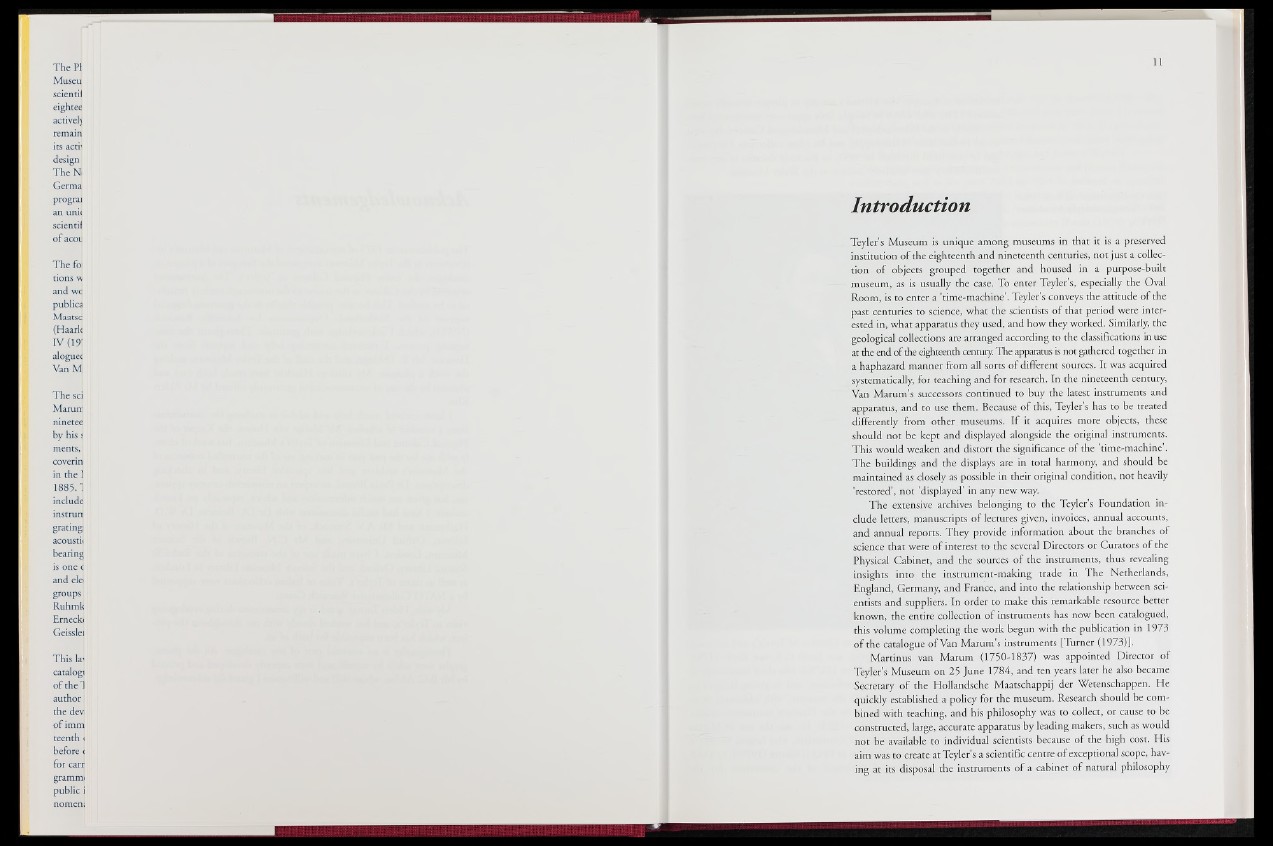
The PI
Museu
scientil
eightee
activel)
remain
its actr
design
TheN.
Germa
prograj
an uni<
scienti!
of aeon
The foi
tions w
and wc
publica
Maatsc
(Haarh
IV (19!
aloguec
Van M
The sci
Mar un
ninetee
by his s
ments,
coverin
in the 1
1885.1
include
instrun
grating
acoustii
bearing
is one c
and elei
groups
Ruhmk
Ernecki
Geisslei
This la^
catalog
of the ij
author
the dev
of imm
teenth <
before <
for carr
grammi
public i
nomen;
Introduction
Teyler's Museum is unique among museums in that it is a preserved
institution of the eighteenth and nineteenth centuries, not just a collection
of objects grouped together and housed in a purpose-built
museum, as is usually the case. To enter Teyler's, especially the Oval
Room, is to enter a 'time-machine'. Teyler's conveys the attitude of the
past centuries to science, what the scientists of that period were interested
in, what apparatus they used, and how they worked. Similarly, the
geological collections are arranged according to the classifications in use
at the end of the eighteenth century. The apparatus is not gathered together in
a haphazard manner from all sorts of different sources. It was acquired
systematically, for teaching and for research. In the nineteenth century,
Van Marum's successors continued to buy the latest instruments and
apparatus, and to use them. Because of this, Teyler's has to be treated
differently from other museums. If it acquires more objects, these
should not be kept and displayed alongside the original instruments.
This would weaken and distort the significance of the 'time-machine'.
The buildings and the displays are in total harmony, and should be
maintained as closely as possible in their original condition, not heavily
'restored', not 'displayed' in any new way.
The extensive archives belonging to the Teyler's Foundation include
letters, manuscripts of lectures given, invoices, annual accounts,
and annual reports. They provide information about the branches of
science that were of interest to the several Directors or Curators of the
Physical Cabinet, and the sources of the instruments, thus revealing
insights into the instrument-making trade in The Netherlands,
England, Germany, and France, and into the relationship between scientists
and suppliers. In order to make this remarkable resource better
known, die entire collection of instruments has now been catalogued,
this volume completing the work begun with the publication in 1973
of the catalogue of Van Marum's instruments [Turner (1973)].
Martinus van Marum (1750-18|wwas appointed Director of
Teyler's Museum on 25 June 1784, and ten years later he also became
Secretary of the Hollandsche Maatschappij der Wetenschappen. He
quickly established a policy for the museum. Research should be combined
with teaching, and his philosophy was to collect, or cause to be
constructed, large, accurate apparatus by leading makers, such as would
not be available to individual scientists because of the high cost. His
aim was to create at Teyler's a scientific centre of exceptional scope, having
at its disposal the instruments of a cabinet of natural philosophy